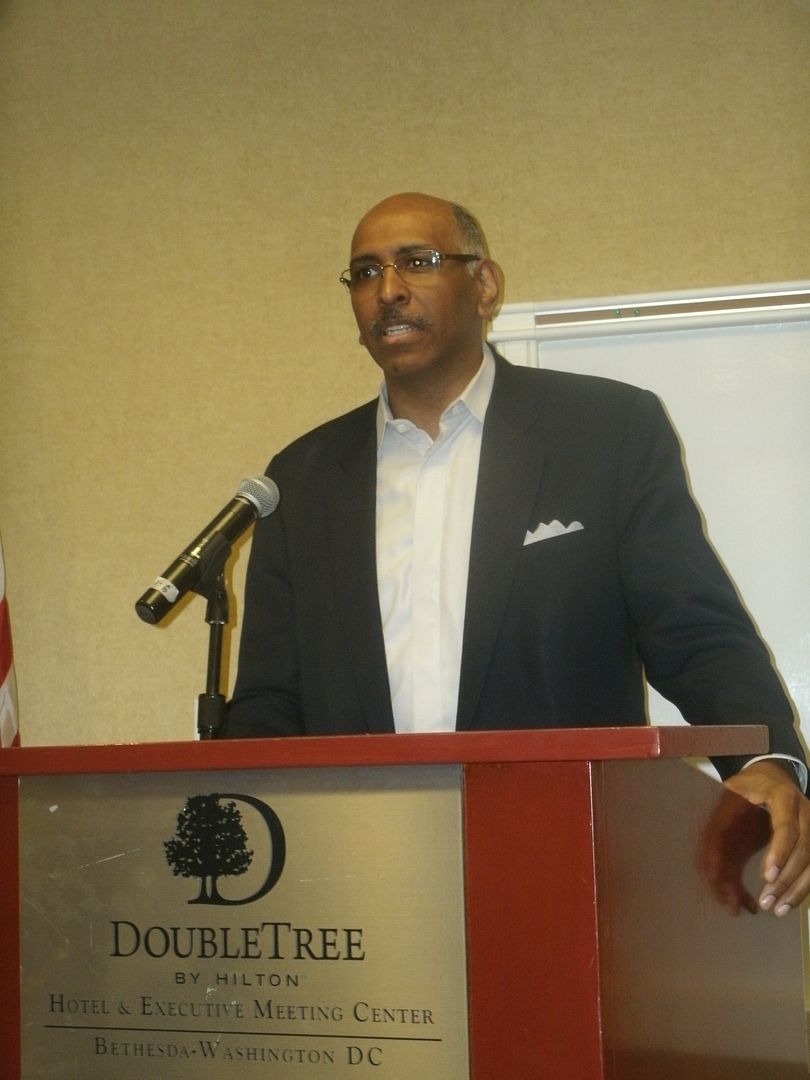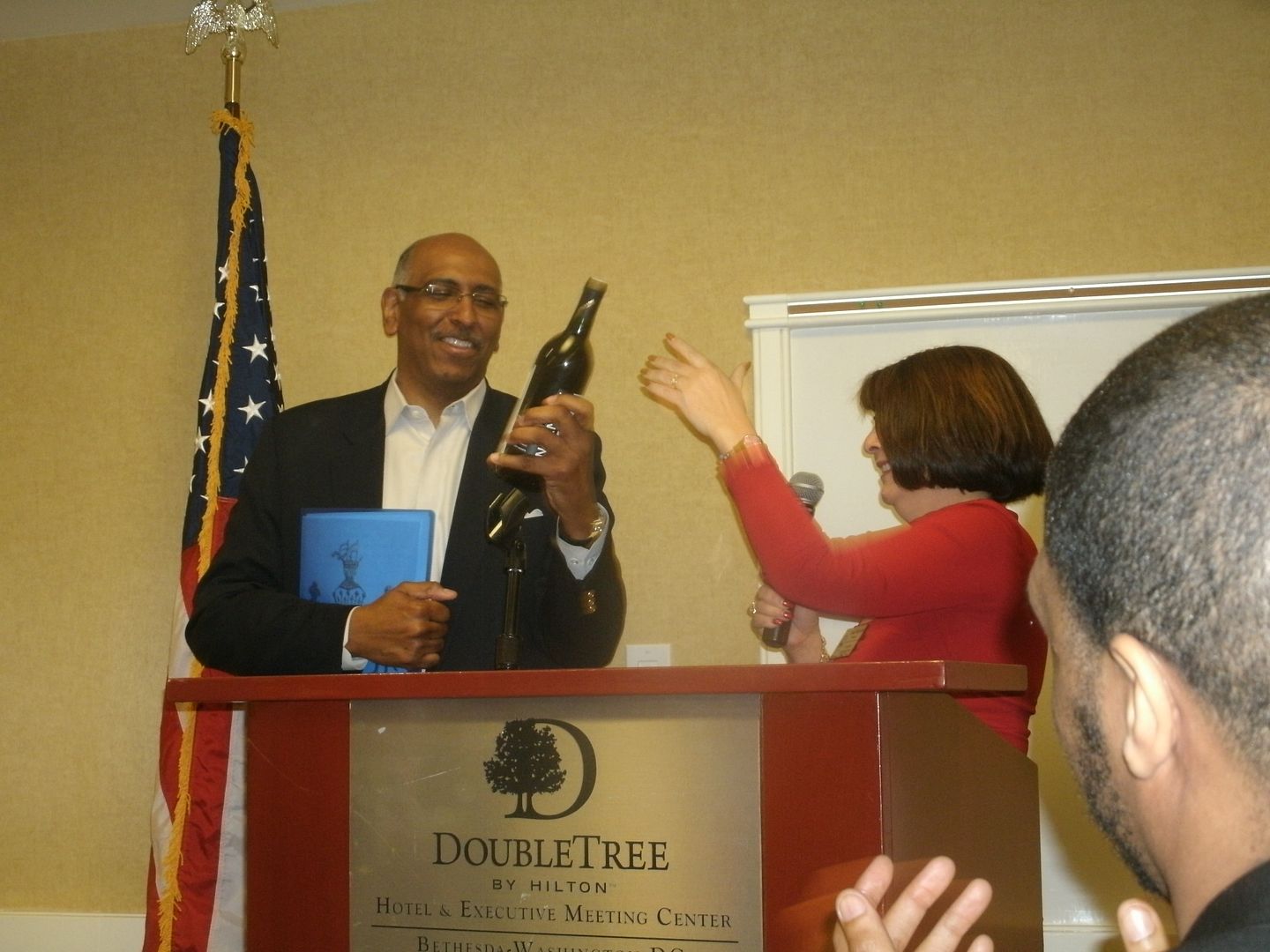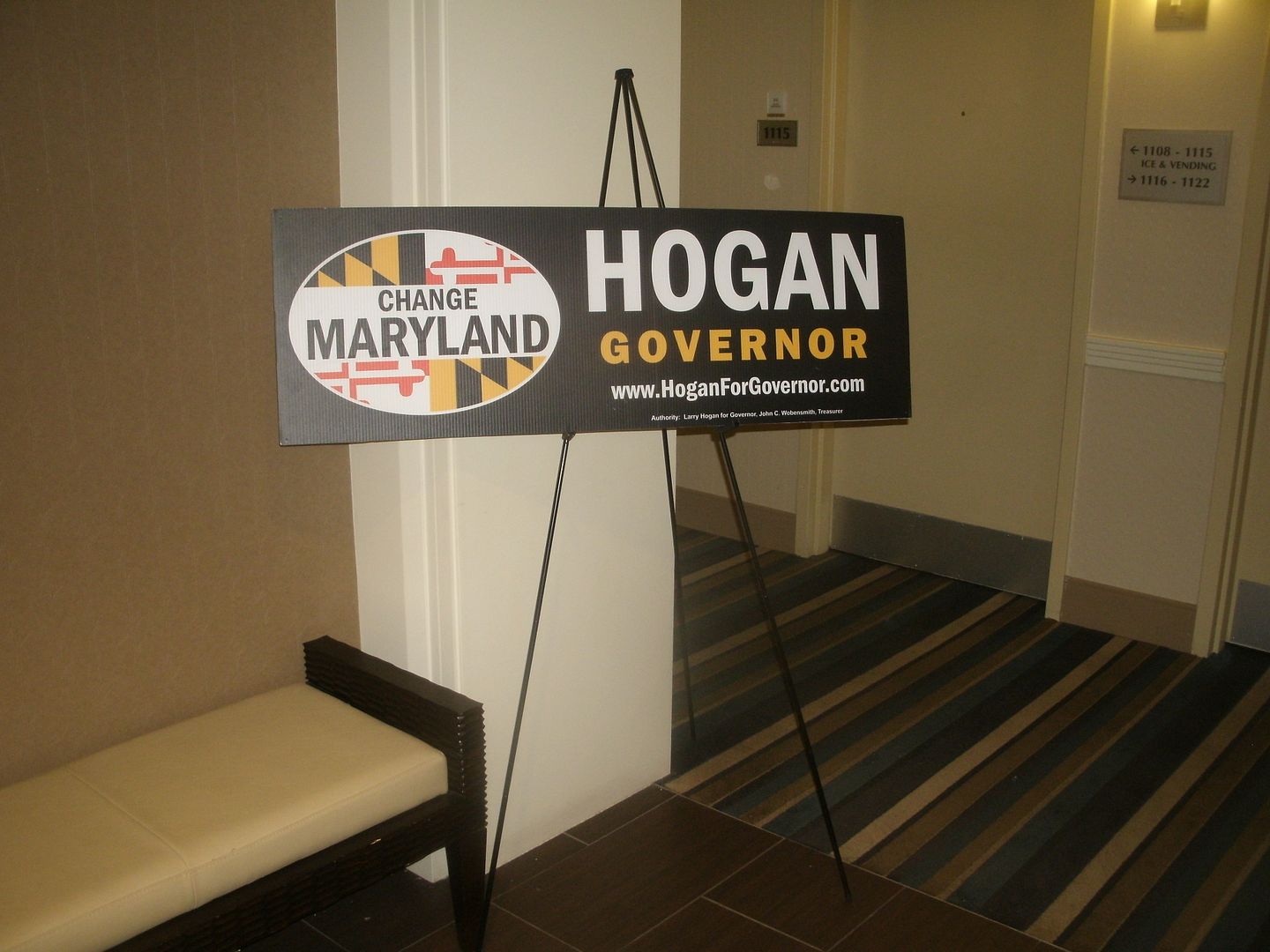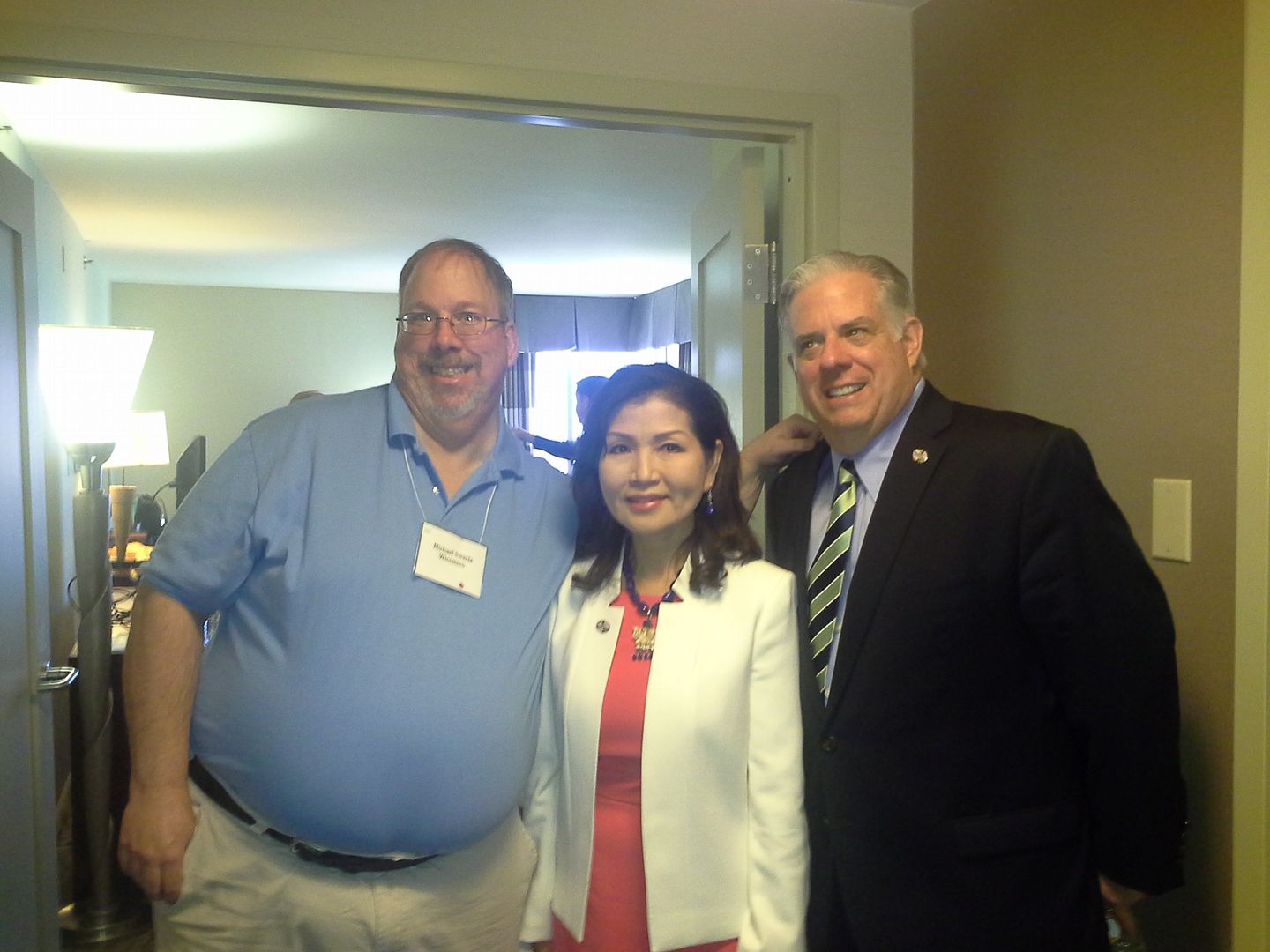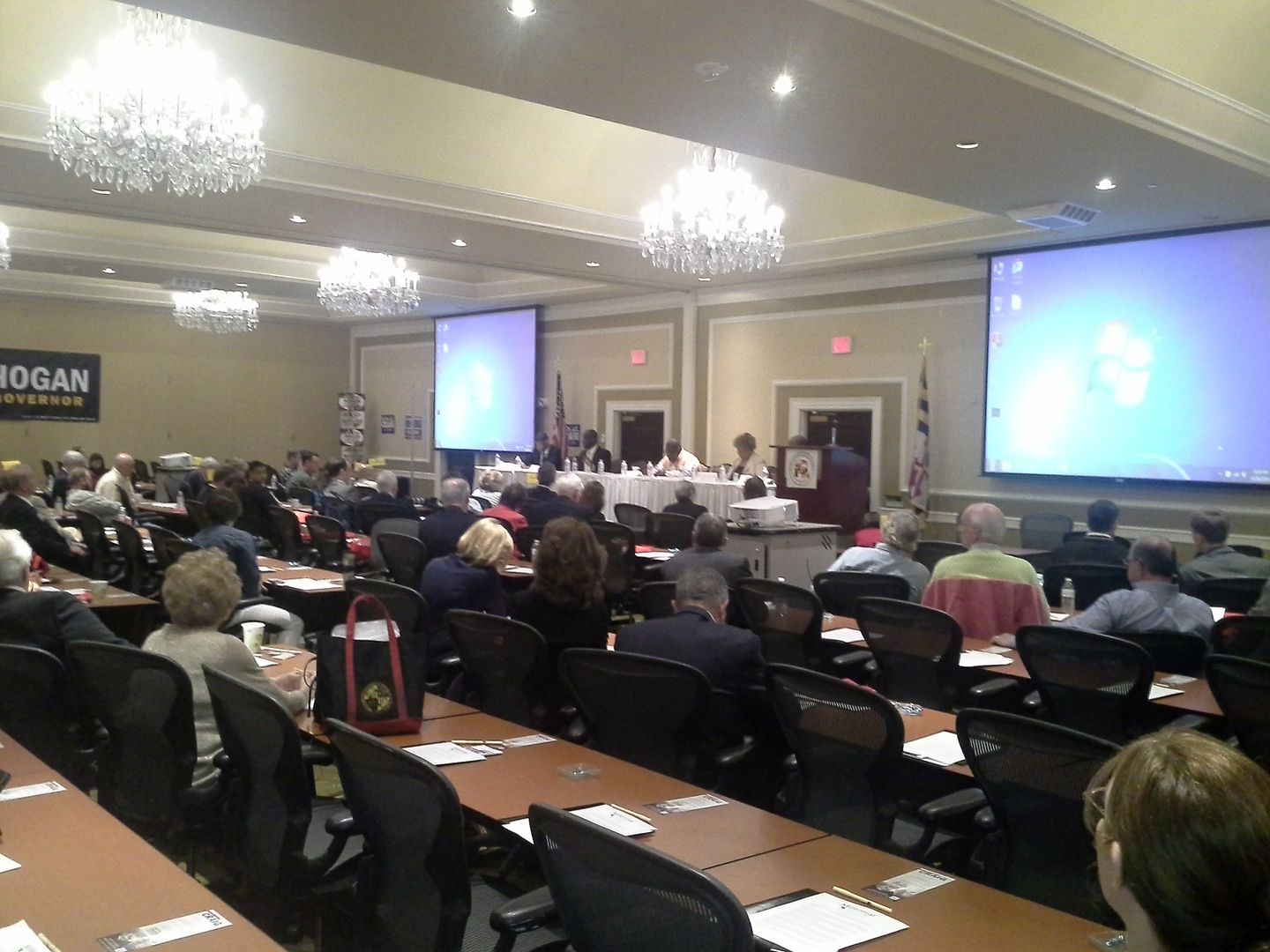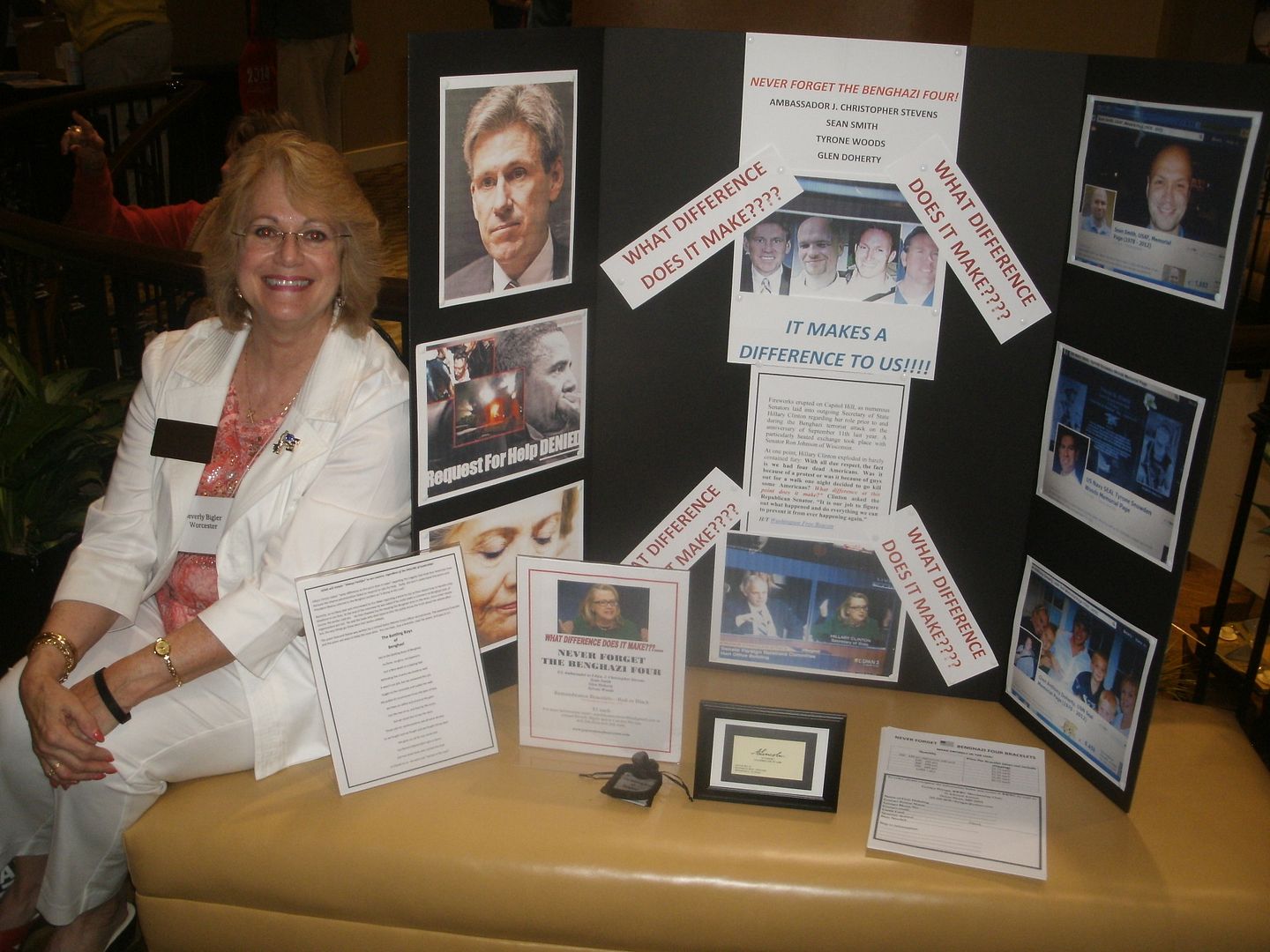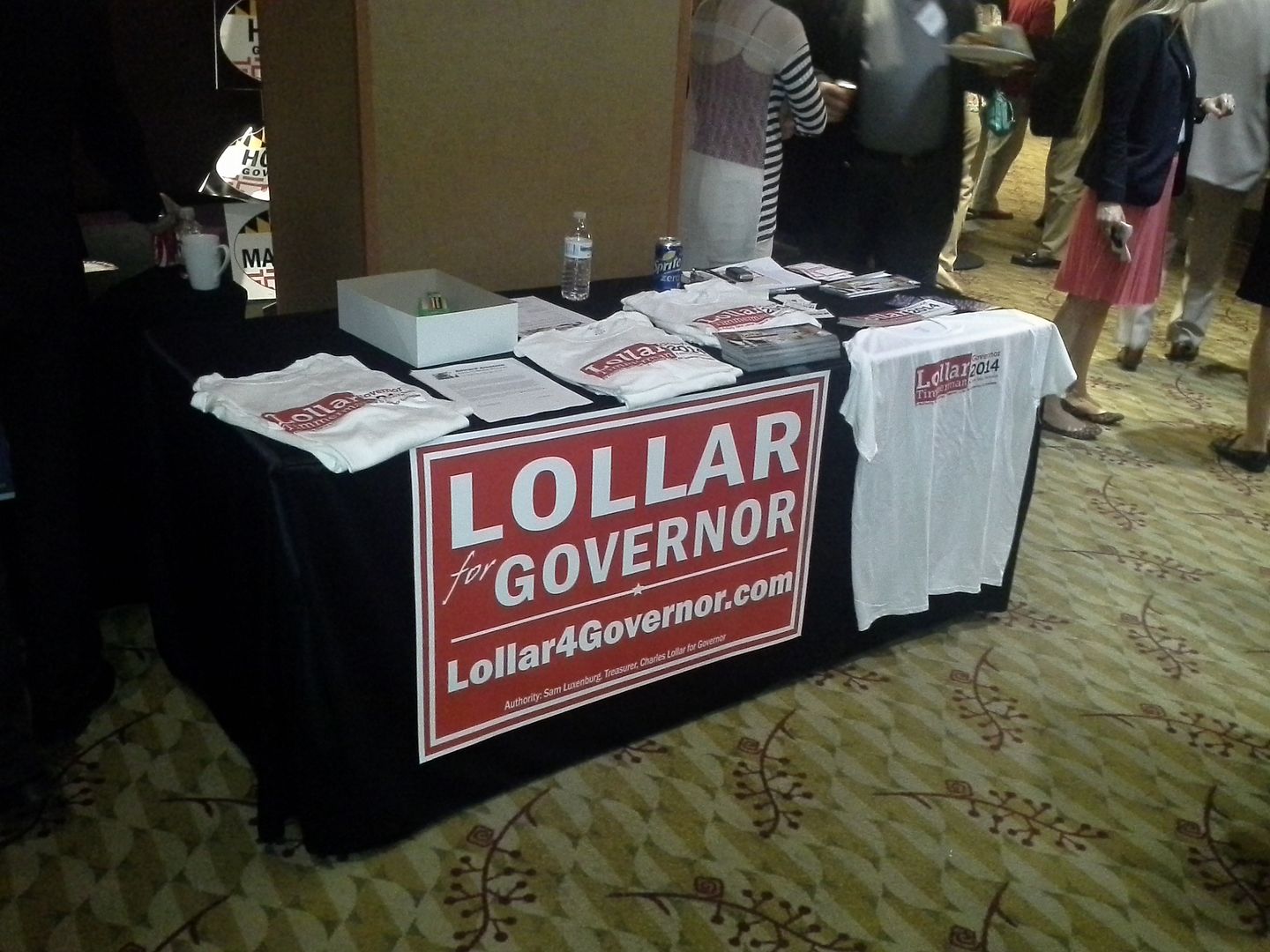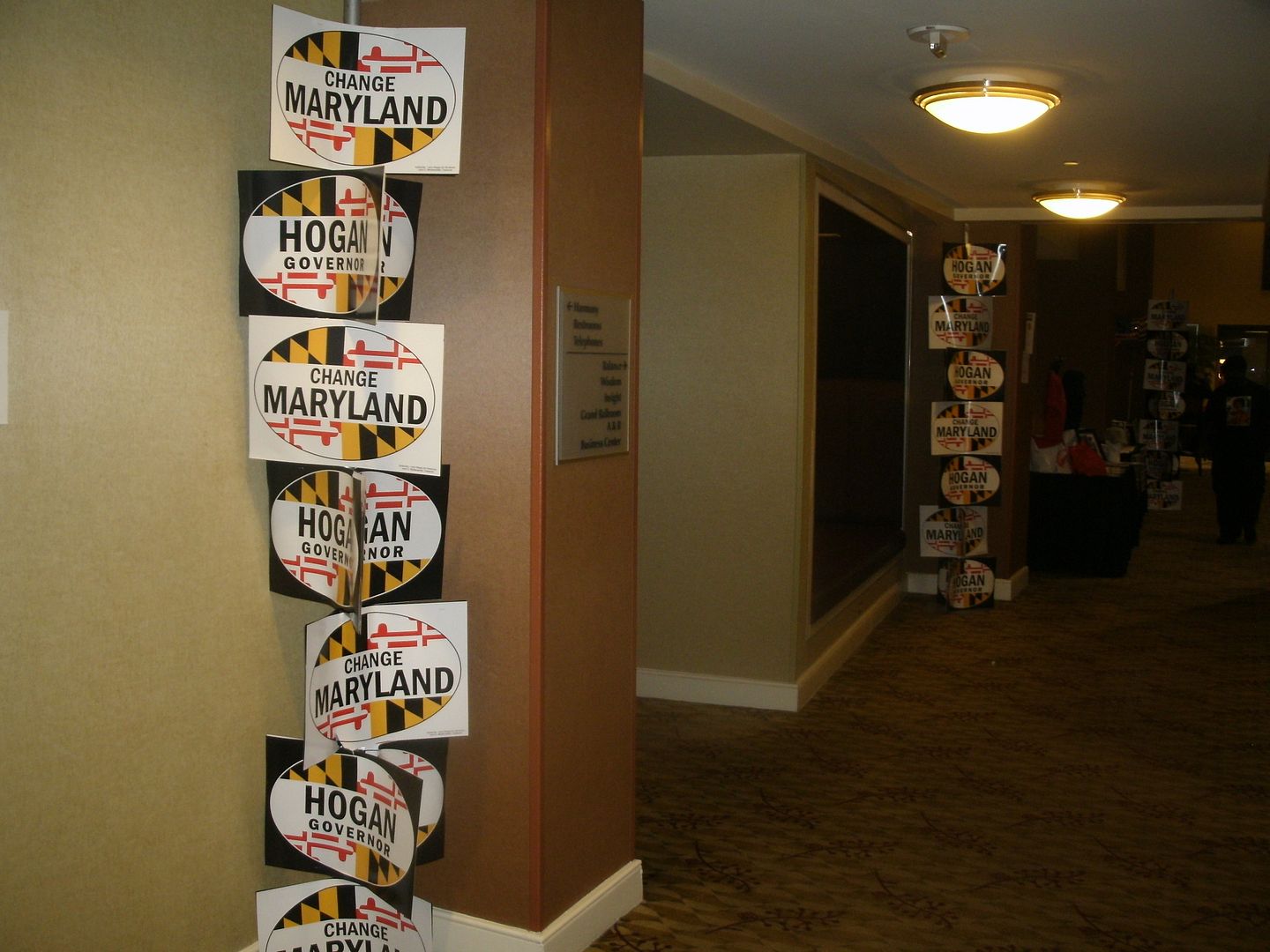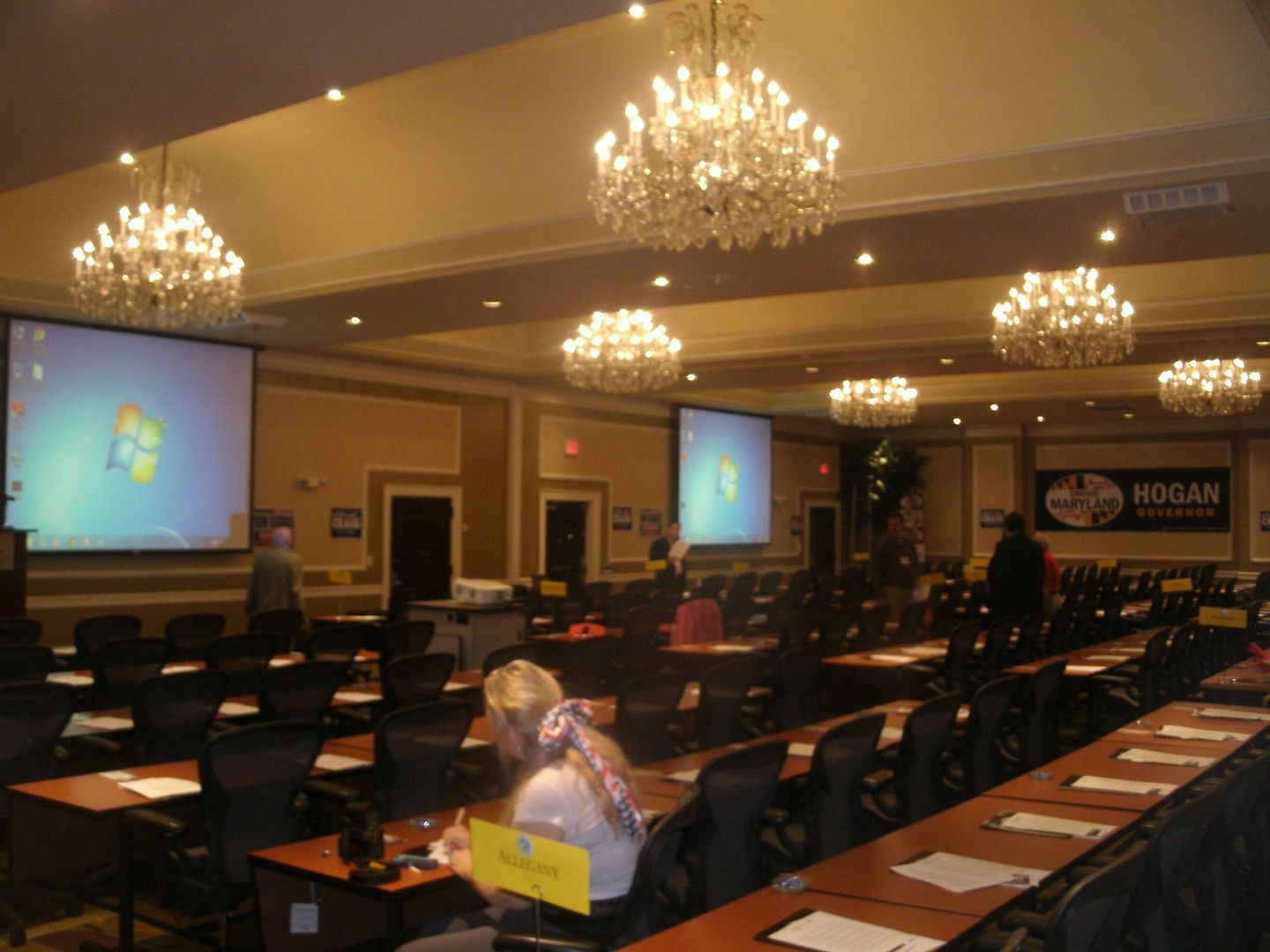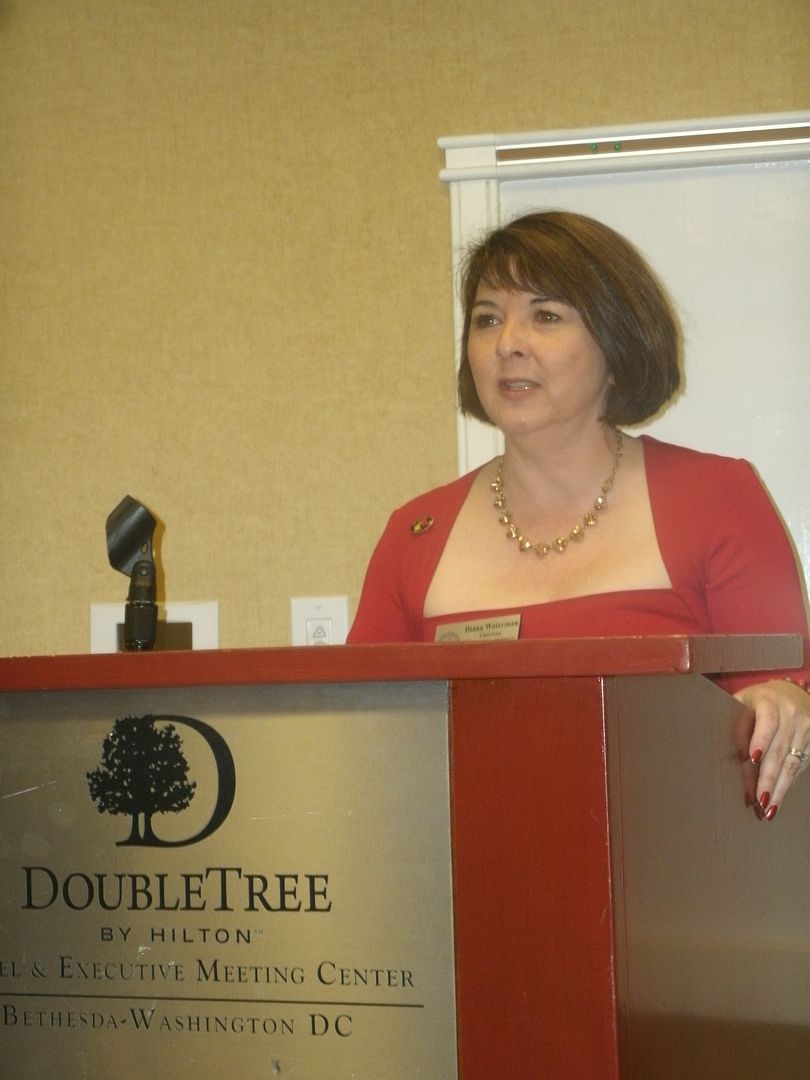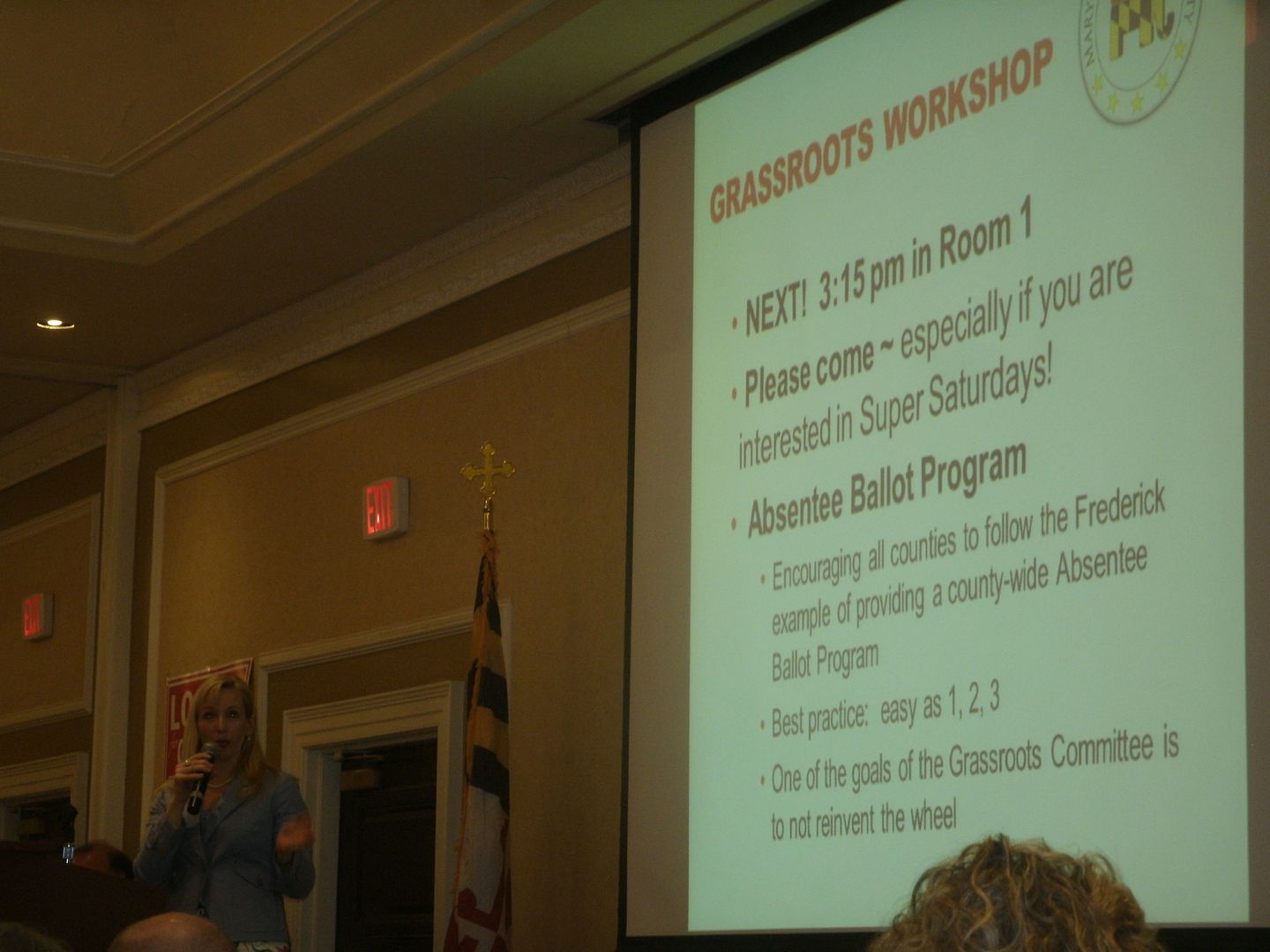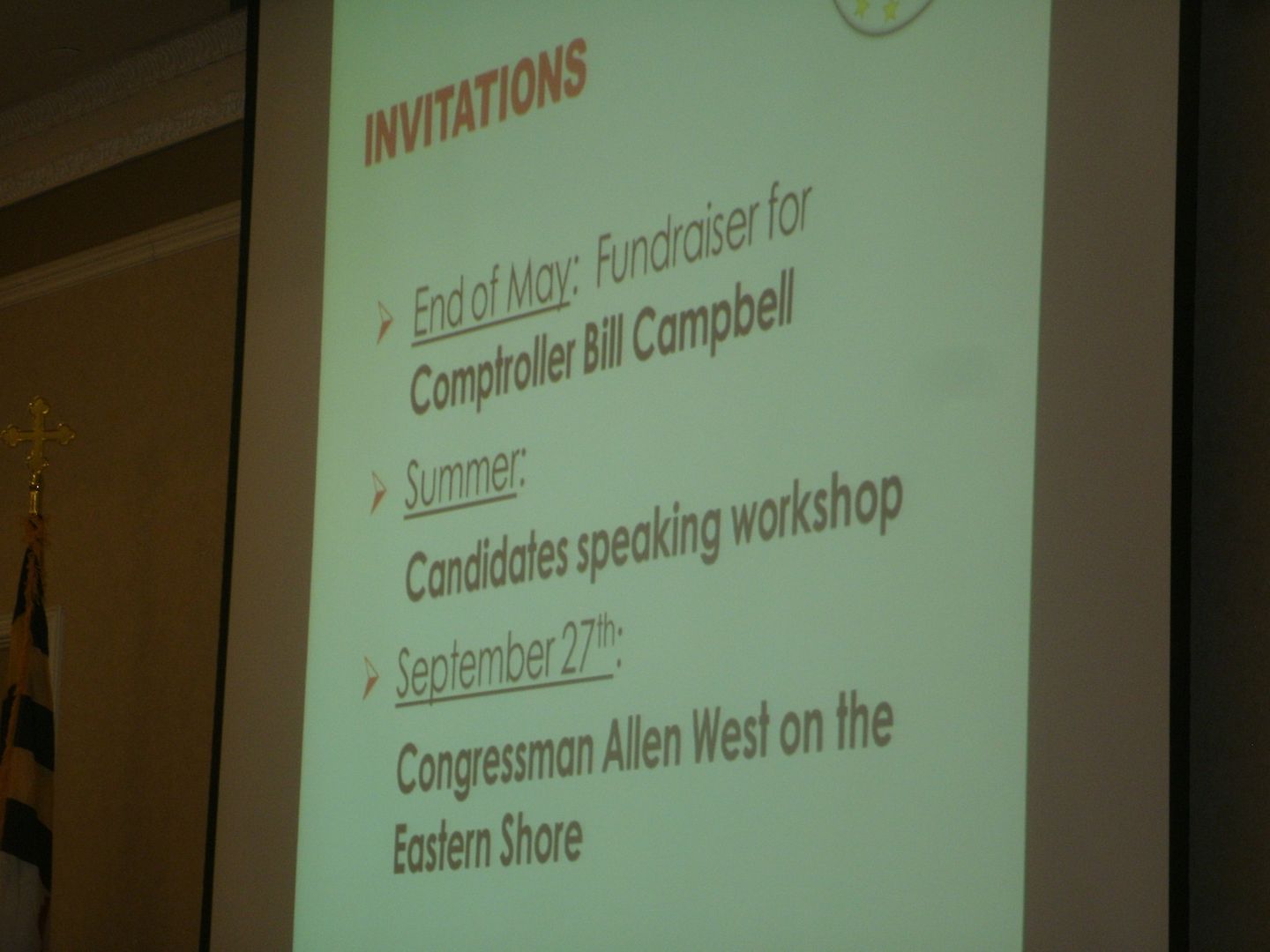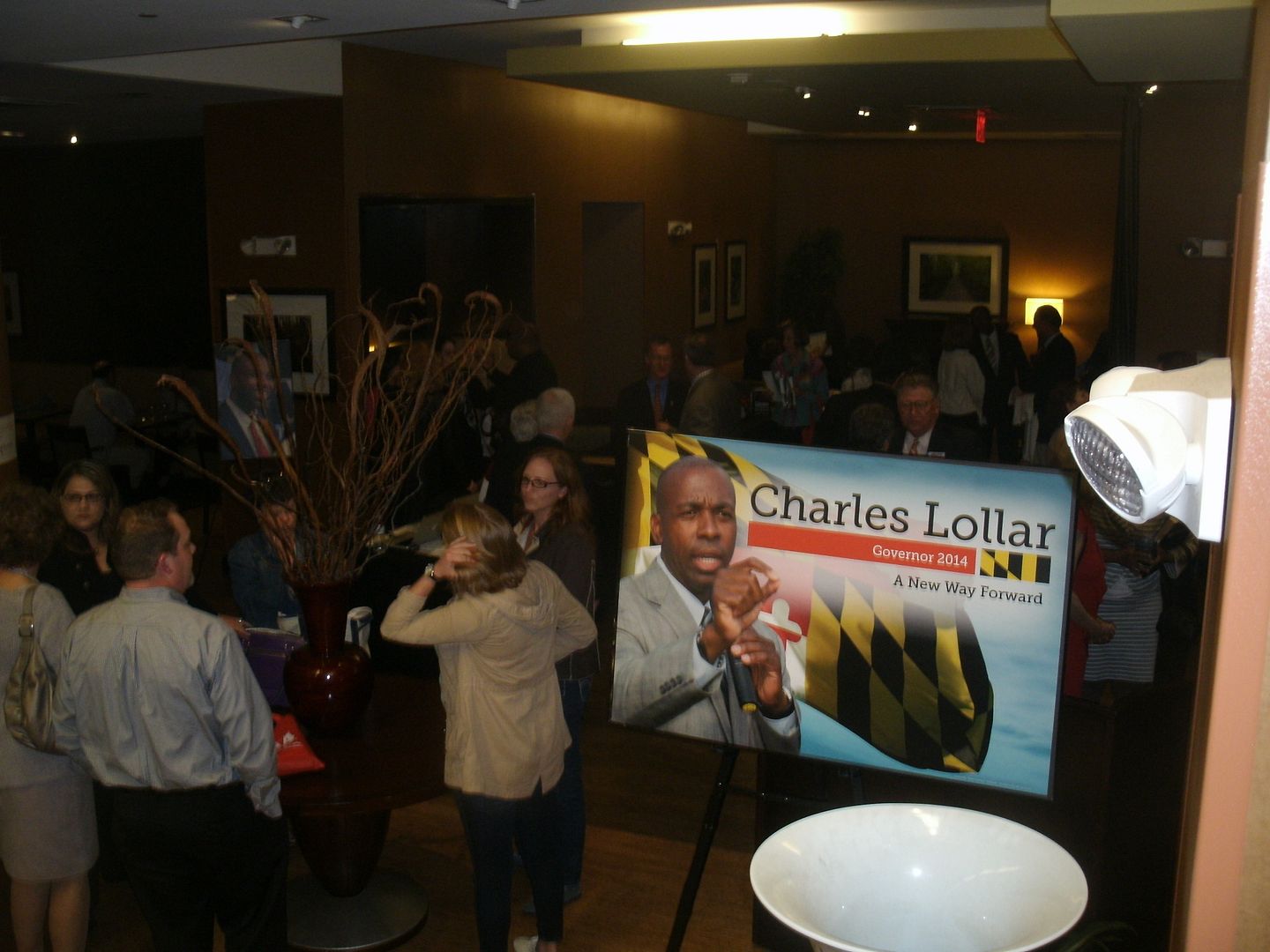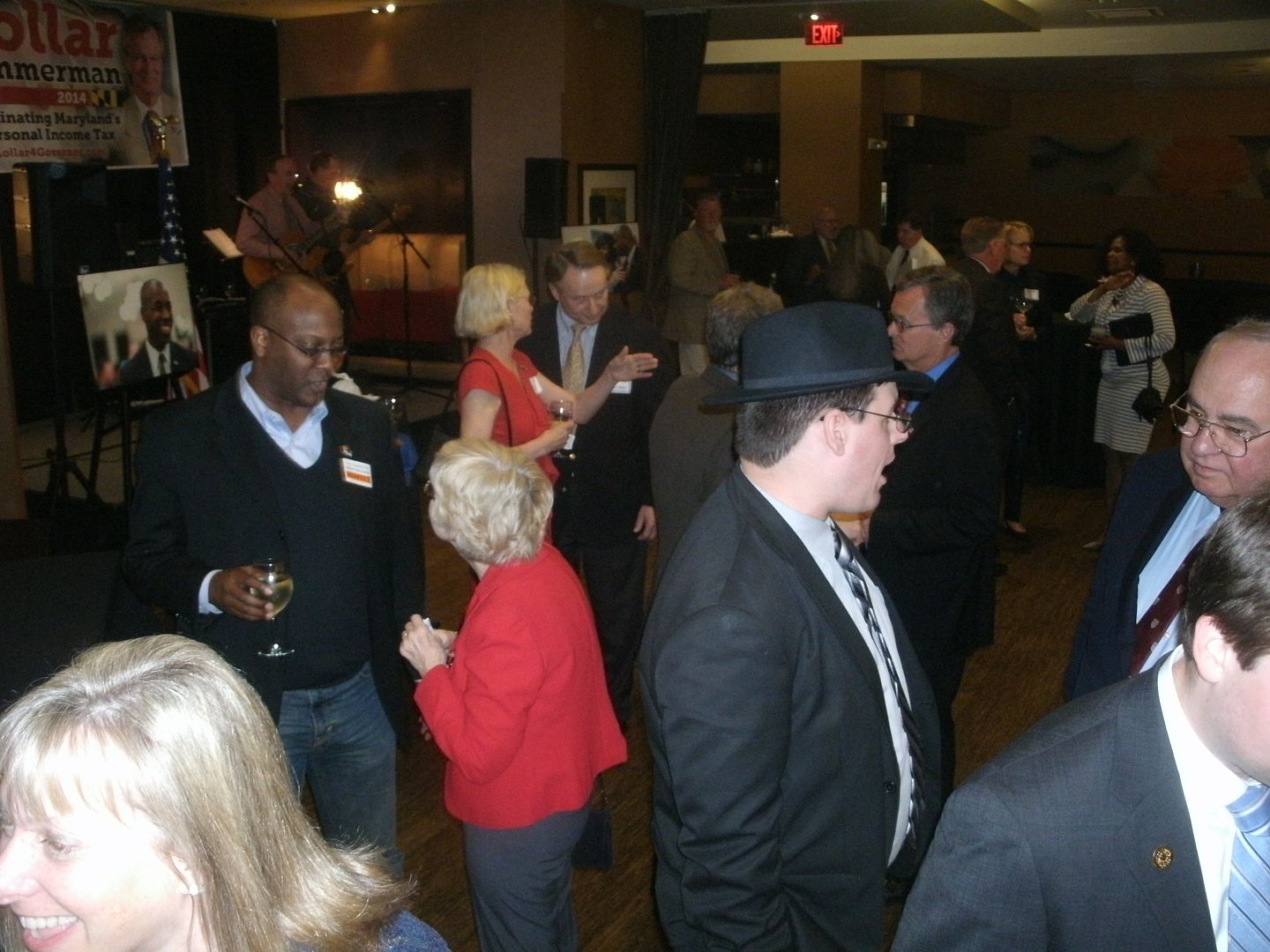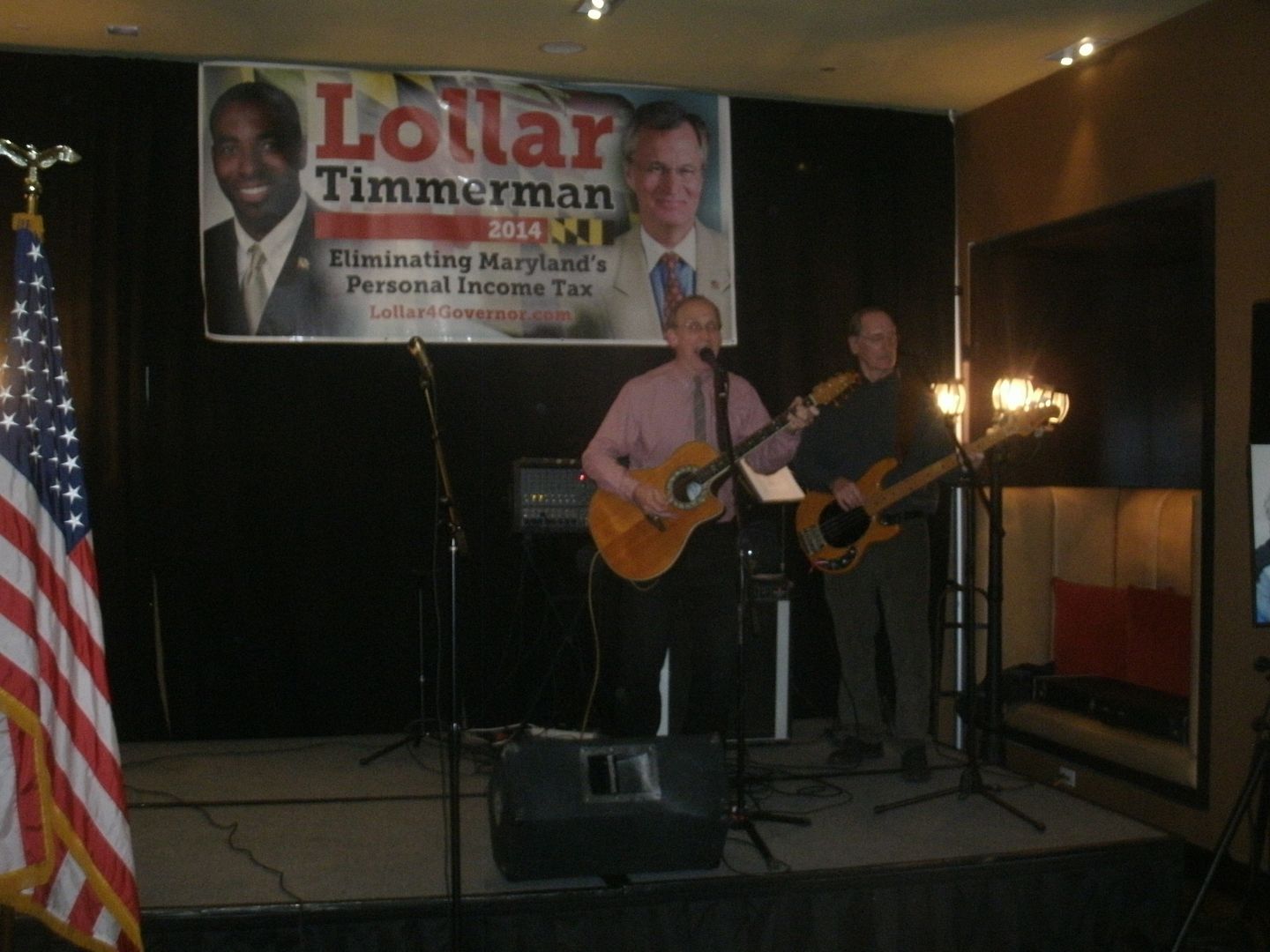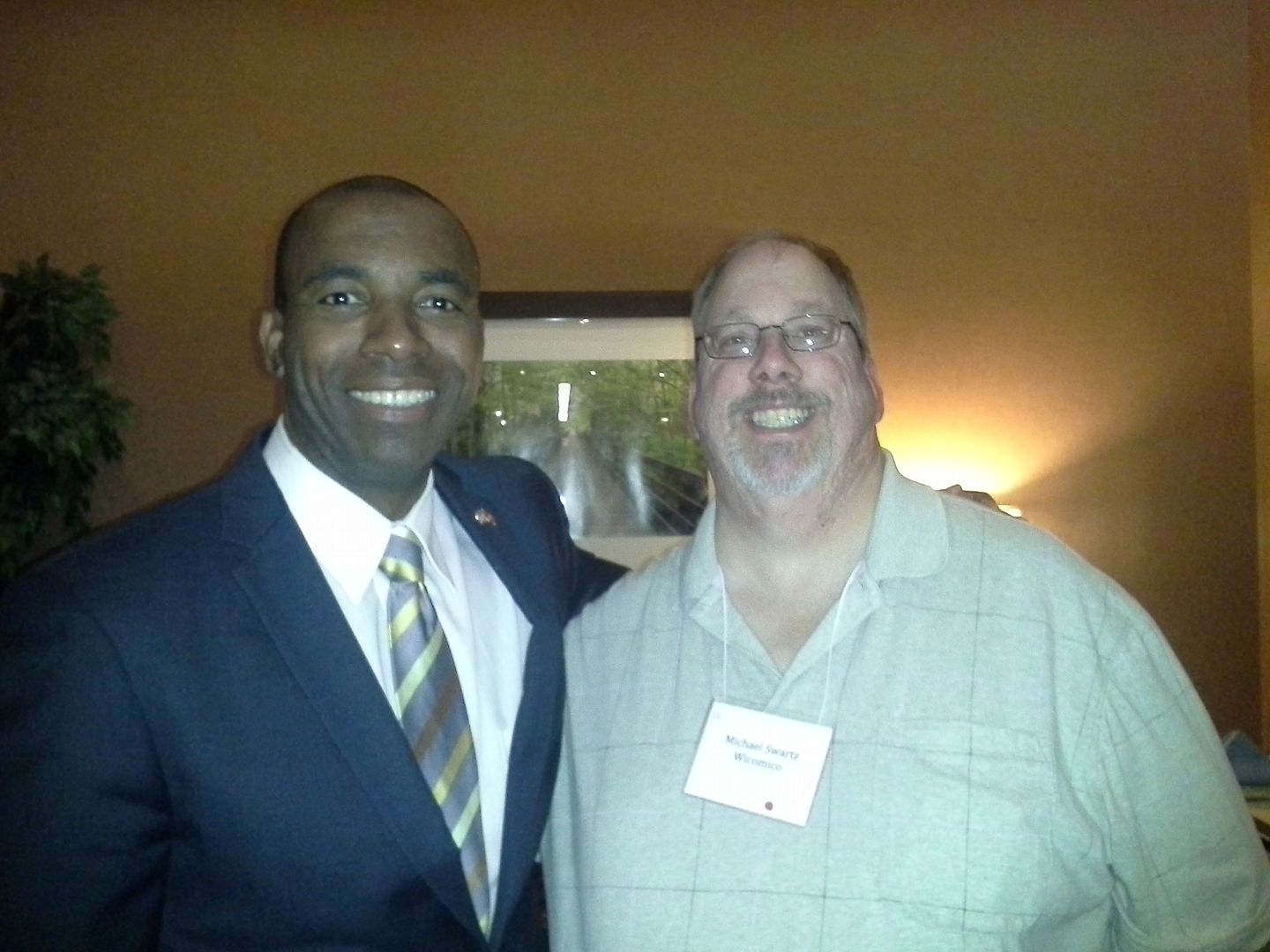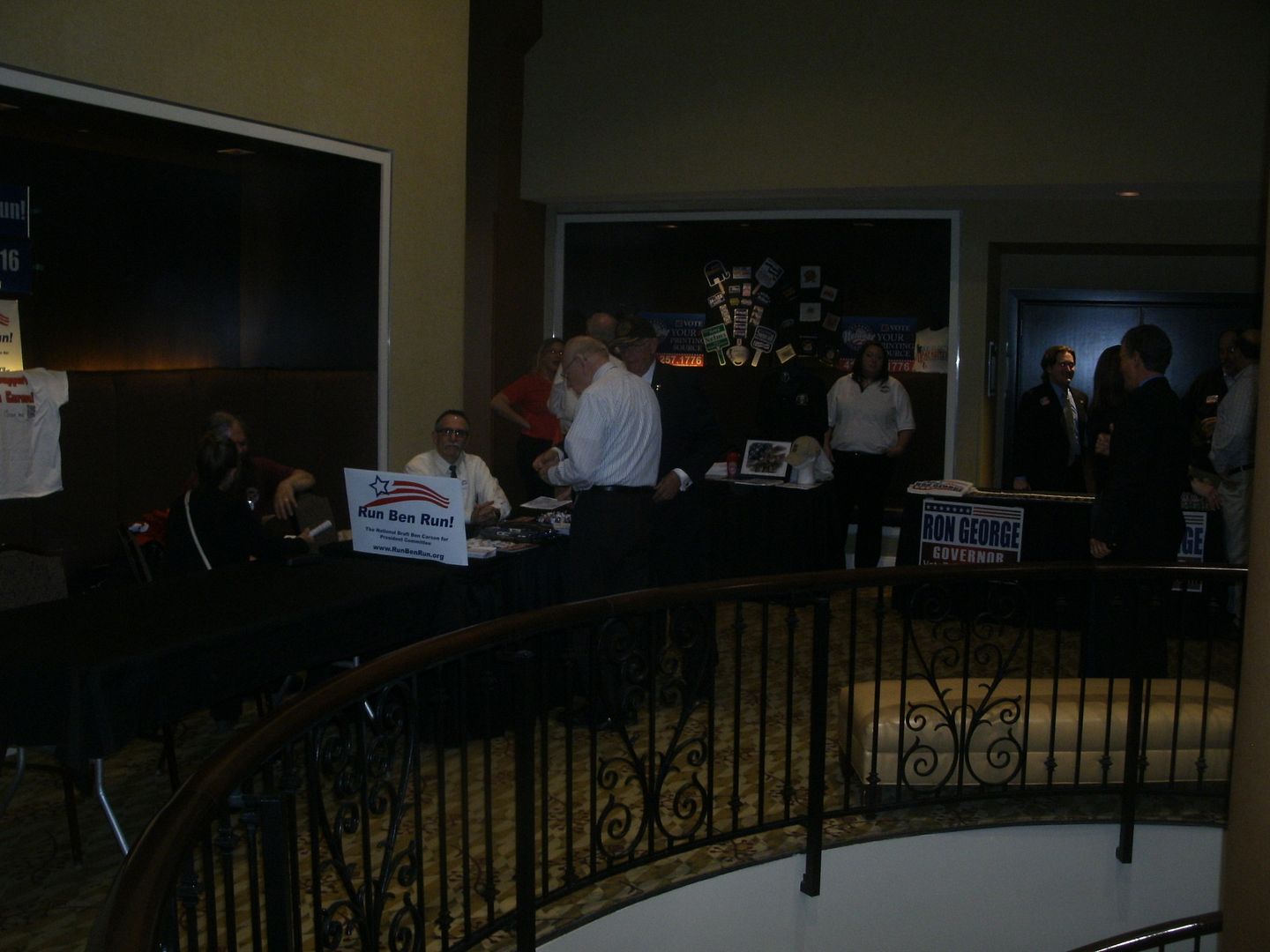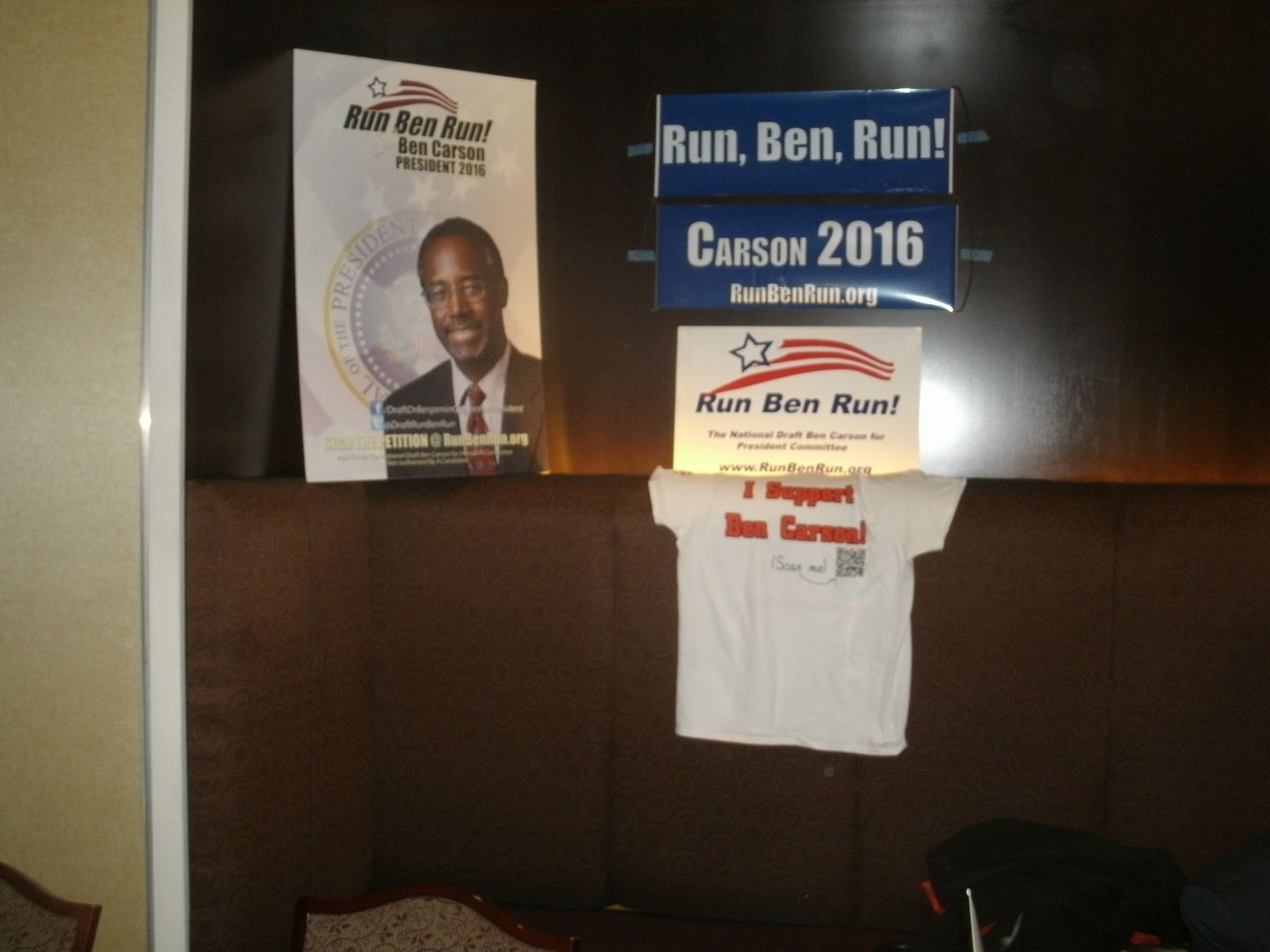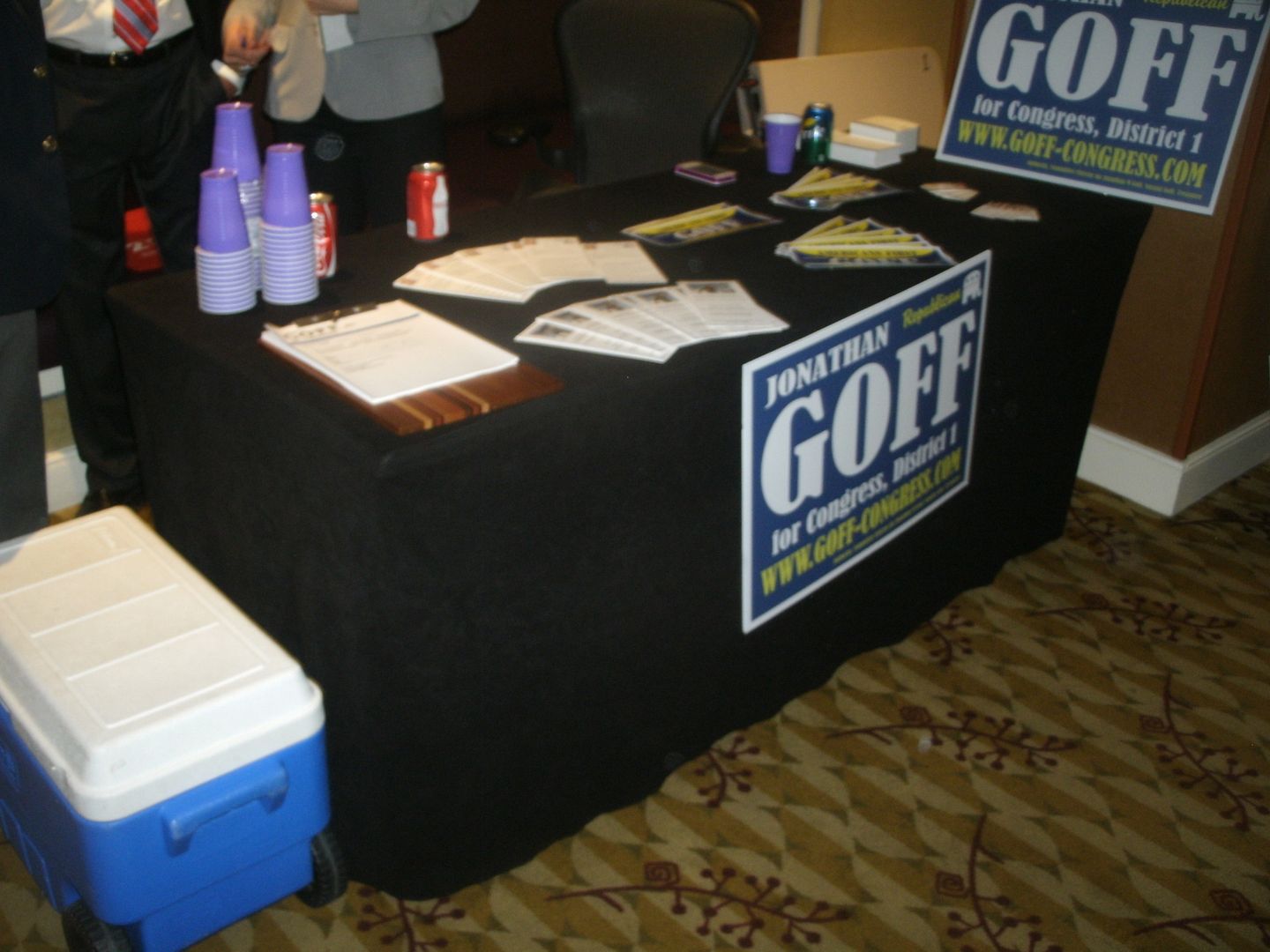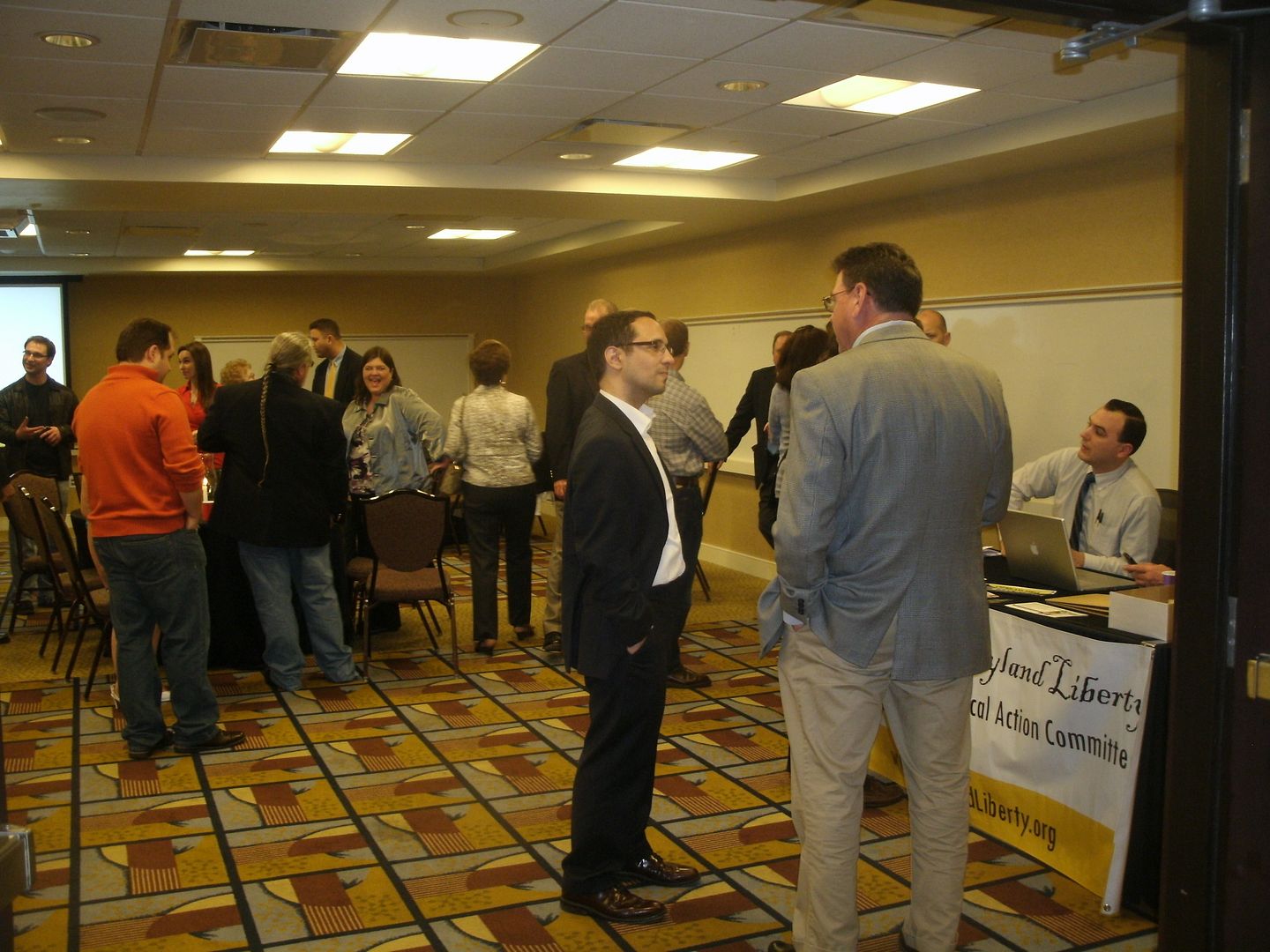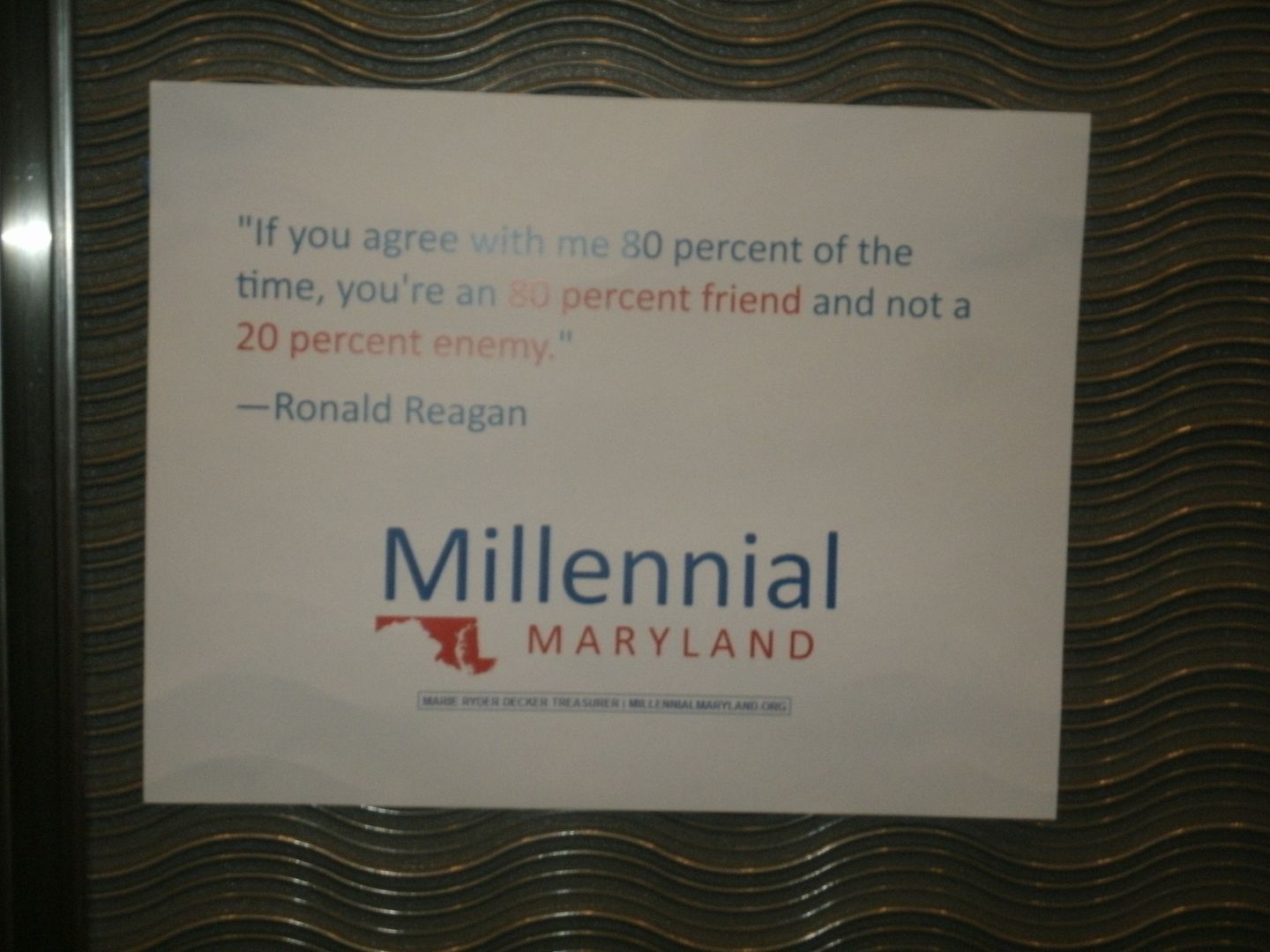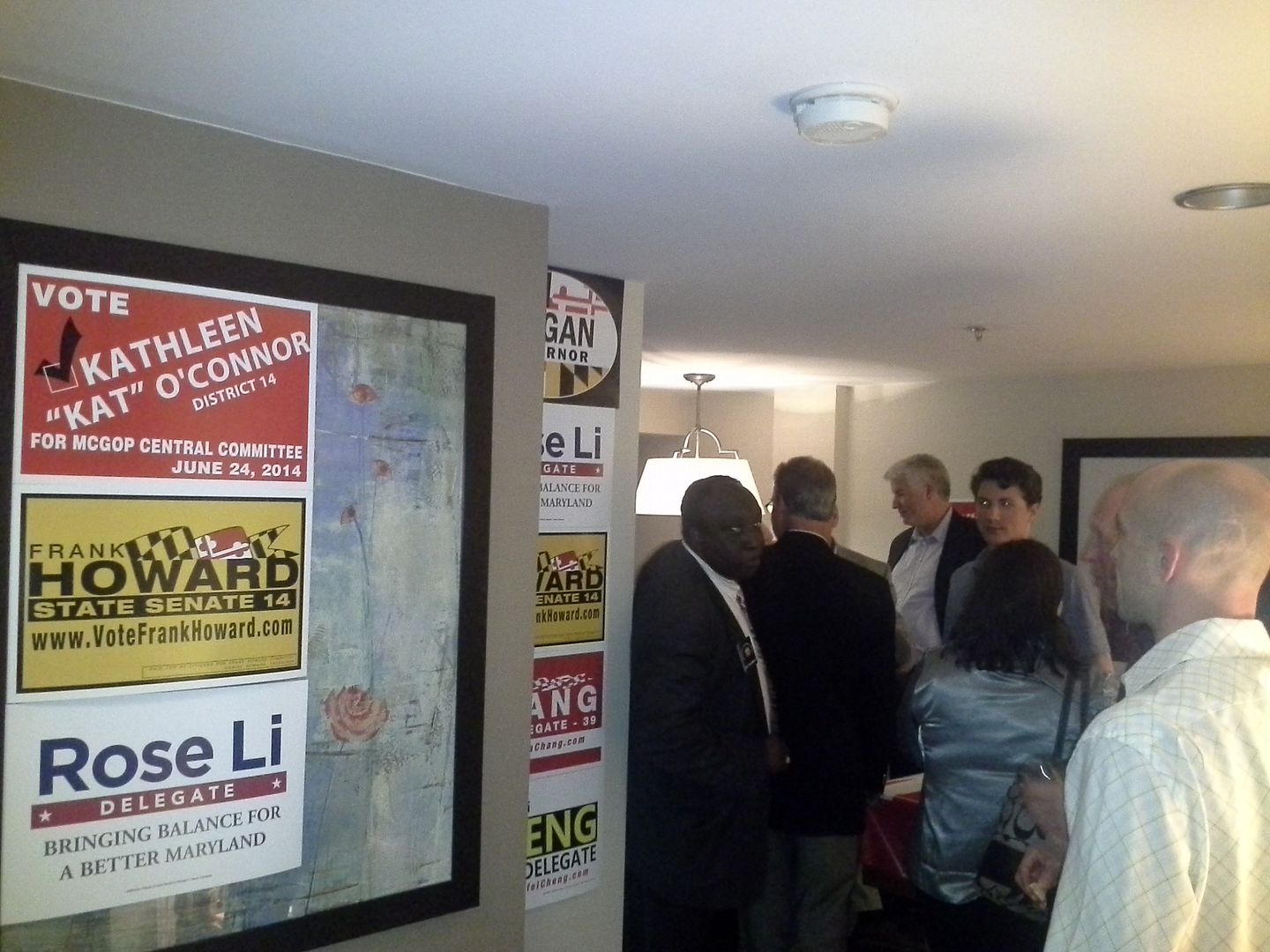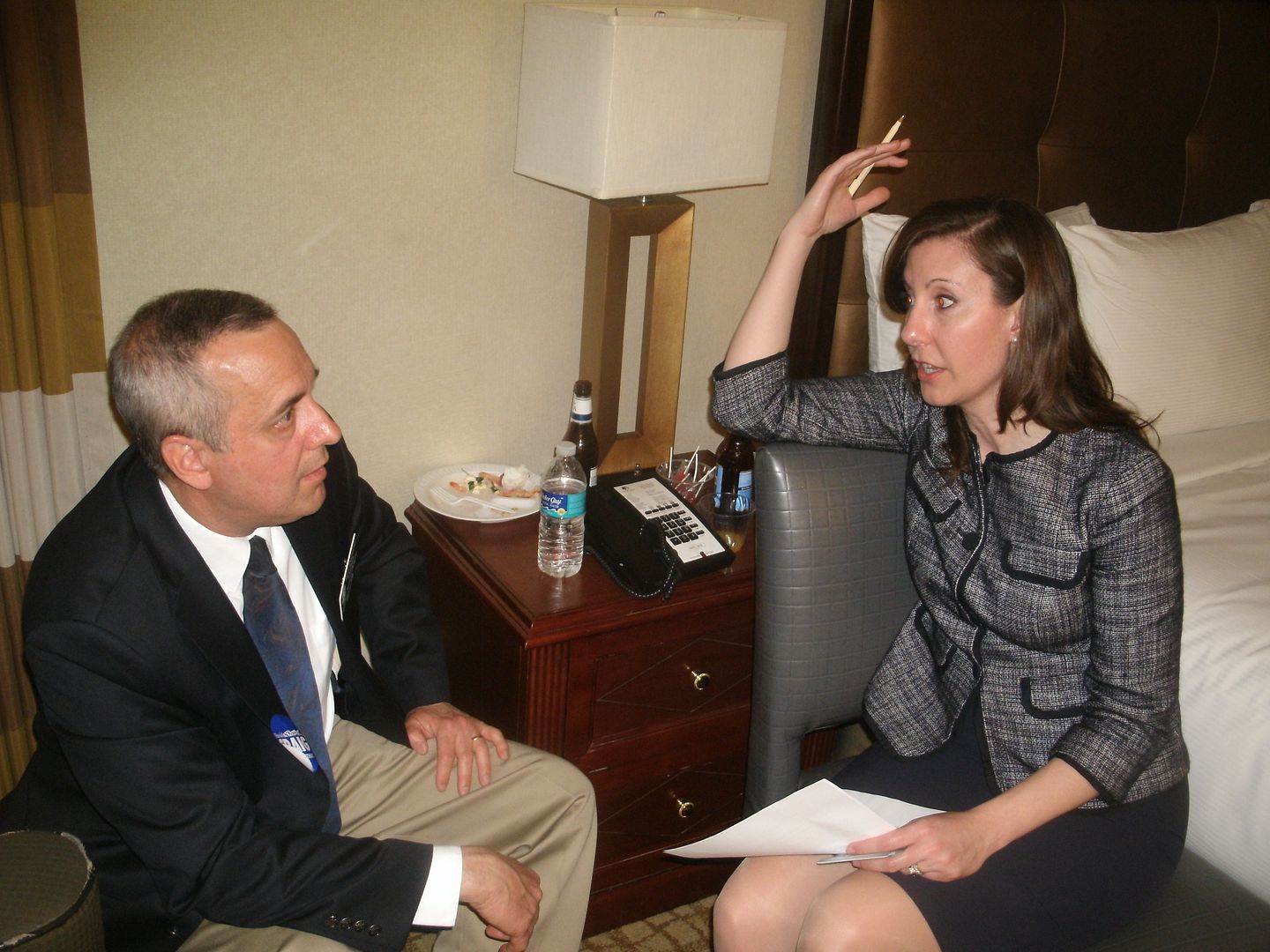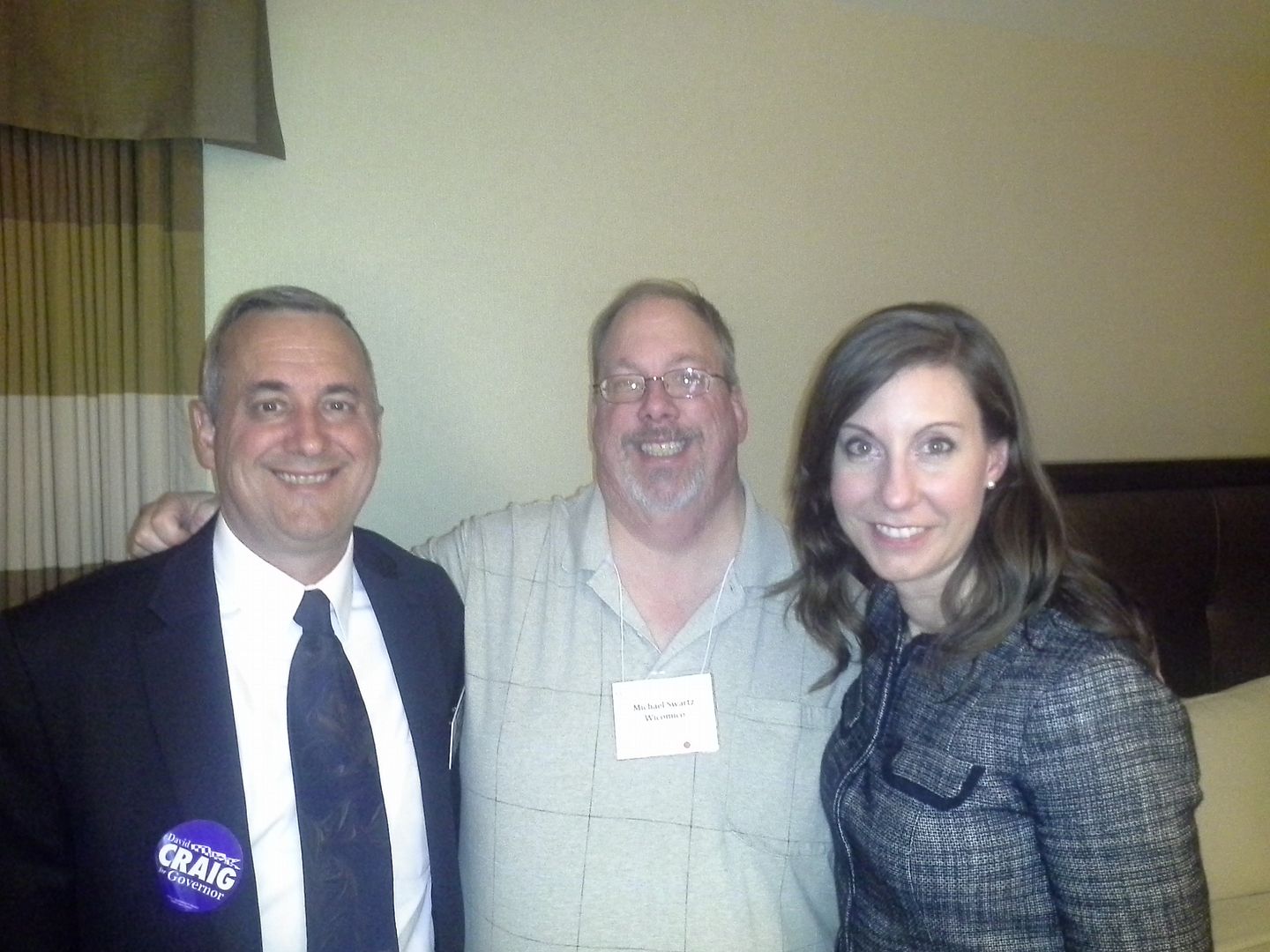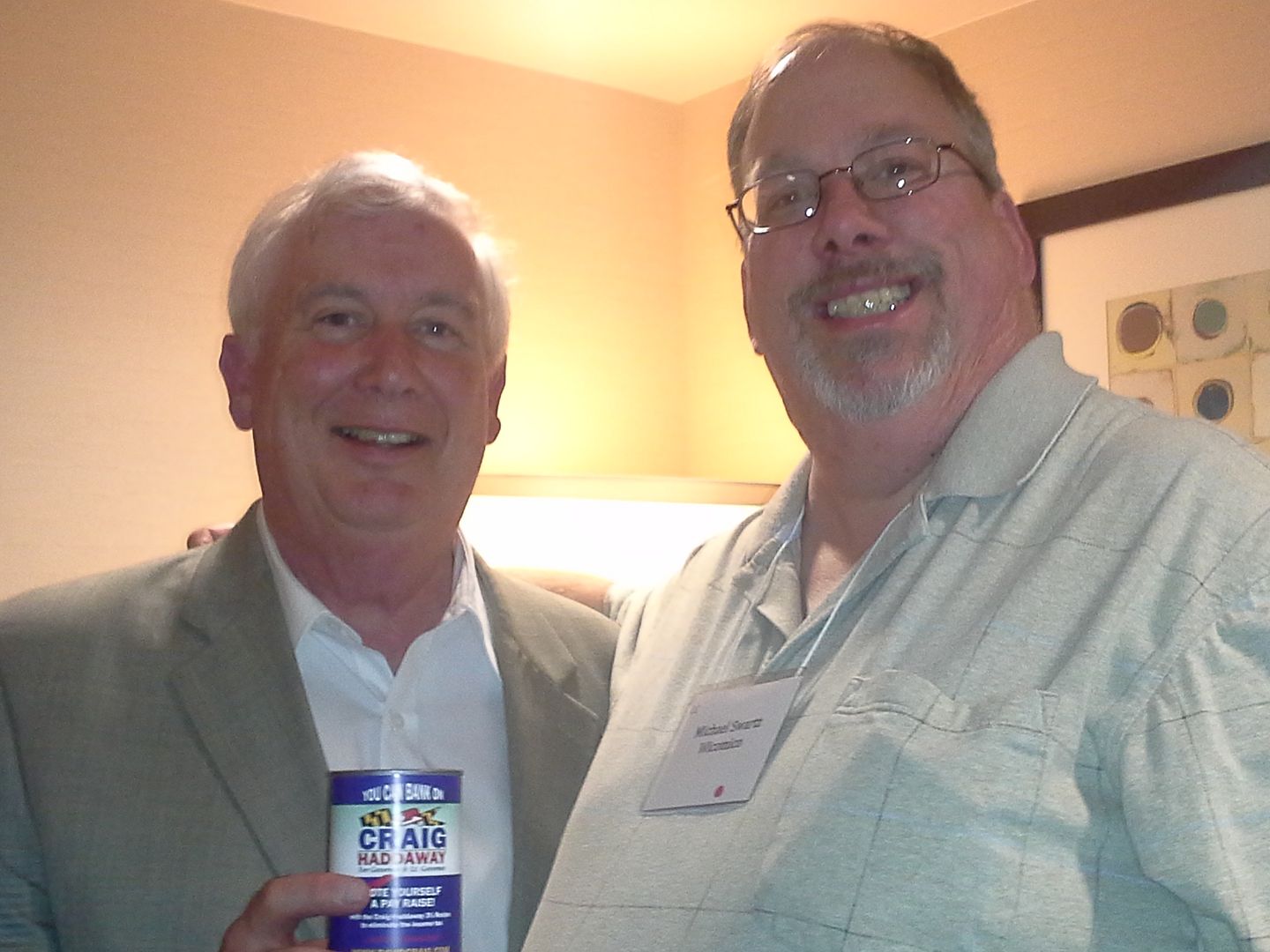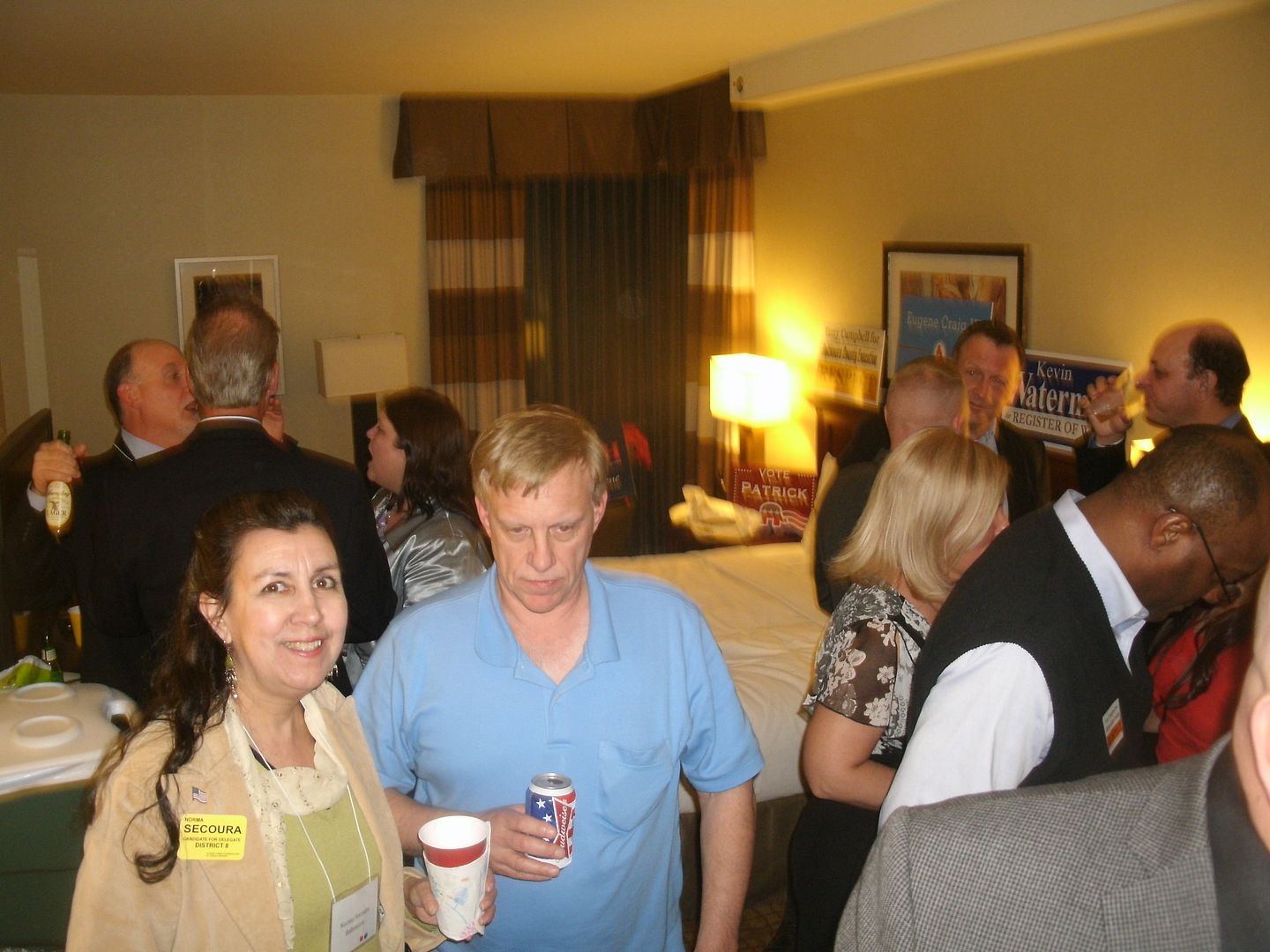Last night (because by the time I finish this it will be Sunday) the four Republican gubernatorial candidates got together at Salisbury University to discuss their vision for the state, an event which was televised locally and will be made available statewide at a future time.
With only one hour to discuss issues, a 2-minute time limit on answers, and questions written by the local Chamber of Commerce – the event was moderated by their executive director, Ernie Colburn – the questions were somewhat predictable given the bread and butter of these campaigns deals with their perception of the state’s sluggish economy. The time constraints only allowed for five questions after a two-minute opening statement and prior to a 70-second close. The five questions had to do with the tax increases and structural deficit, creating a business-friendly tax code, addressing the challenges in attracting jobs, a seat at the table for the Eastern Shore, and restoring highway user funds. I would have liked one more directly addressing agriculture, but we didn’t get the opportunity to write the questions.
One other weakness with the format of the debate is that the candidates were placed in alphabetical order, which is fine, but initial responses were not properly rotated. Charles Lollar either answered questions first or last, as did David Craig, while Ron George and Larry Hogan had the benefit of hearing at least one answer. In this narrative, I will discuss the candidates in order of their opening statement, which happens to be alphabetical order beginning with the Harford County Executive.
First of all, David Craig perhaps had the best-organized presence there, which included running mate Jeannie Haddaway. Some of Craig’s blue-clad staff were there, but many others had Craig lapel stickers advocating his support of concealed carry. They all sat in one section of the audience, a section which I sat immediately behind. They also had an event close by the University beforehand, so David made a day of it.
In his opening statement, Craig made sure to mention his running mate and her ties to SU, from which she graduated. “Jeannie and I are very much alike,” said Craig, referring to their respective families’ long history in Maryland. “I want the twelfth generation (of Craigs) to still live in Maryland,” said David.
He stressed his experience in balancing nine budgets when addressing the structural deficit, pointing out that he had reduced taxes and cut spending during his tenure. Craig would not kick pension or health care benefits down the road as he implied the current administration has done, instead proposing more “paygo” projects funded from existing revenues rather than bonding, specifically noting casino proceeds as one source. (It bears noting that it would take a legislative act to do so, as casino proceed percentages are set by the General Assembly and the plurality of nearly 50 percent is supposed to go to education. So this could be construed by others as “cutting education.”)
In adopting a more business-friendly tax code, David pointed out we shouldn’t be taking the dollars in the first place. He proposed slashing the business tax rate from 8.25% to 4% in stages, but also explained that many businesses such as S-corps use a personal tax form to report their business income. He also wanted to address the sales tax, gasoline tax, and tolls.
Craig also remarked that Harford County had gained 8,000 jobs at a time the state was losing them, but his focus wouldn’t be so much on bringing jobs in as it would be keeping them here. “Just 25 percent of businesses are hiring” right now, said Dave, and he would address this by getting a more proactive Department of Economic Development and expanding broadband capabilities. We would not be Silicon Valley, said Craig, but we could be “Silicon Bay.”
In terms of giving the Eastern Shore a seat at the table, Craig played up his decision to secure Jeannie Haddaway as his running mate. “The Craig-Haddaway ticket is going to have someone (from the Shore) who will always be on the second floor, not just at the table.” He continued by saying Haddaway gave up a safe seat in the House of Delegates to try and benefit her region.
Craig also vowed no money to the Red Line or Purple Line and promised that counties will get their highway user funds back in the first year of a Craig administration.
He closed by taking a subtle jab at opponent Larry Hogan, saying that we didn’t need to change Maryland, “just change what’s on the second floor.” Between him and Jeannie Haddaway, they were 14-0 in beating Democrats, he concluded.
Overall, I thought Craig gave a solid, steady performance. He rightfully played up the presence of Haddaway on the ticket, although I suppose if you were watching from other parts of the state it could be seen as pandering to some extent. Yet of all the running mates, she’s probably the most qualified to succeed David if the unthinkable should happen.
Ron George was blunt in his opening statement: “This is about the economy…the other side has not solved one problem.” The facts were ominous, as he told us about 73,000 unemployed Marylanders and a manufacturing sector “still stuck in the recession.” He was a working man, with a career and business he interrupted to serve his fellow citizens.
Ron would address the structural deficit by combating waste through independent audits and putting together a Spending Affordability Commission that doesn’t paint such a rosy outlook – they predicted 4.5% GDP growth in FY14 and 6% next year. “These rosy forecasts have got to stop,” said Ron. He would also address the state’s bond situation, where debt service costs the state over $1 billion a year.
But he was realistic enough to realize “I can’t go in there as a king,” meaning he can’t just change government overnight. But what we could change, he would – “I’m guaranteeing you the things I’m saying,” said George. Yet he made an excellent point about the challenges to attracting jobs by asking why we look down on the tradesman, instead emphasizing the four-year degree? There’s no focus on that sort of education, Ron added. Being a guy who has an interest in “made in America,” this was one of the two highlights of Ron’s night insofar as I was concerned, with the other coming in the next question.
After Ron talked about the Eastern Shore being “in my blood,” he addressed such items as more state money for tourism (with a proposed slogan – “the Maryland Eastern Shore: life as it should be” – bringing back the canning business, protecting farms, expanding broadband, and reducing sales tax on this side of the Bay. But the best idea went back over 50 years, to a time when each Eastern Shore county had its own State Senator. “I think we need to have a Constitutional Congress in this state and go back to something that makes it fair for the Eastern Shore and the rural areas,” said Ron. And while I said 48 Senators (two from each county) I still think it’s an outstanding idea.
Ron used the highway user fund question a little differently, making the case that he would be “a governor for all of Maryland” and that helping Baltimore City would assist the rest of the state. But he would repeal the automatic increases in the gasoline tax and instead of a “reactive” transportation plan his would be proactive.
He concluded by promising to be a “hard worker” as governor and to treat all fairly, while also mentioning a little about running mate Shelley Aloi, who was also at the event.
Something I’ve observed about Ron, though, is that he comes across as ill at ease in a public speaking situation. He also rattled off a lot of numbers in his presentation, and perhaps sealed his image as a policy wonk because he’s also the only candidate who wears glasses. I noticed him looking down reading a lot, instead of looking at the camera. He also had very little presence at the event, which led to his only getting a smattering of applause after questions rather than a rousing ovation. I have no doubt he would be a hard-working governor – and as a policy wonk type myself I loved a few of his ideas and goals – but he’s going to have to overcome a lot to get there.
I was surprised that Larry Hogan didn’t have a larger presence there as well. In his opening he alluded to three recent visits to Salisbury University before settling into the familiar bromides of not desiring to be something, but to do something and being fed up with politics as usual. He also brought back the oft-repeated refrain of the state being on the wrong track and the emphasis on jobs, the middle class, and restoring the economy.
Of course, in the first question Larry brought up the $9.5 billion in new taxes, but pointed out that he worked for an administration which finished with a cash surplus that’s now once again a structural deficit eight years later. He would cut spending first, then roll back taxes where he could. Recently, Hogan added, he put out a plan to address $1.75 billion just by enacting existing recommendations.
Another familiar Hogan theme was that of our state being 41st of 50 in business-friendliness. Our corporate tax rate was “not competitive,” personal taxes were too high, and regulations too stringent. He would eliminate the hostile attitude and vowed “Maryland will be open for business again.”
After another regular reprisal of those things we’ve lost in terms of businesses, Larry made the case that there’s been “no discernible response” from Annapolis. He asked how an administration could be pro-jobs yet anti-business?
As far as the Eastern Shore goes, Hogan called the current administration “openly hostile” to the Shore, adding that he spoke to Jim Perdue, who told Larry he “feels like they are attacking our business.”
“There’s been a war on rural Maryland,” Hogan added.
Larry then made a statement some have already jumped on, saying “I agree with David; I think Jeannie (Haddaway) is terrific. I actually appointed Jeannie to the legislature and if I’m lucky enough to be governor then I’d think she’d make a terrific ombudsman and maybe liaison for the Eastern Shore.” He then added that the Shore is “not the only place neglected.”
In that respect, Larry is probably correct because each area of the state has needs not being addressed, But as a whole our part of the state is the poorest and tends to have higher unemployment. It could easily be argued we’re already in a recession.
He then promised to restore the highway user fund cuts that were “devastating” to local governments, perhaps by chopping away at the 53% of transport dollars spent on mass transit.
Hogan warned in his close that this was the “last chance to turn this state around,” this being “a fight for Maryland’s future.”
As a whole, Hogan’s performance came across to me as “meh.” The problem is that I’ve heard it all before, and this particular debate format and questioning lent itself to Hogan’s perceived strengths. Yet he never hit anything out of the park.
Although he appeared a little tired and troubled, Charles Lollar spoke with the most passion, generally motioning with his arms as he spoke. (Since I couldn’t watch the feed, I don’t know if this was seen at home.) Once he made the case that the state is going in the wrong direction, he mentioned that even the Democratic strongholds of Montgomery and Prince George’s counties and Baltimore City believe “the course is wrong.” He claimed his economic plan had the approval of Dr. Arthur Laffer and his health care plan won favor from Dr. Ben Carson, but vowed to “aggressively look for non-partisan solutions.”
So when Lollar stated that spending had jumped 36% over the last eight years (including $2.3 billion this year), he announced his intention for a taxpayers’ bill of rights (or TABOR) law to hold spending in check and to phase out the income tax in five years. “How would you love to wake up in five years, in 2019 in Maryland, and not have a personal income tax that you have to pay?” he asked.
He repeated the Laffer endorsement in his next answer, as well as the TABOR reference, but added that our legislature and governor doesn’t understand business. “We have a governor who hasn’t had a job in 28 years,” Lollar quipped. But he also dropped a bombshell on the group by proposing term limits. “It’s time for us to get rid of the career politicians,” he opined. Me? I love the idea, but it also has to come with the discipline of keeping the non-elected regulatory state in check.
Lollar pledged his running mate, Ken Timmerman, would address the challenge of attracting jobs by using his investigative skills to focus on waste and the 84 new taxes and fees. He also made the case that the biggest challenge to business is simply staying in business.
Charles wanted to “make the Eastern Shore a priority,” noting that we don’t get a good return on our tax dollars and would rather just be left alone by regulators. They’re “tired of being picked on,” said Lollar. He also brought up the Hudson lawsuit.
As for the highway user funds, Charles promised to stop the Red and Purple Lines, which were enacted under “reckless leadership.” He also wanted an “enforceable lockbox” over the funding.
Lollar got the last word in the debate, saying the job calls for real leadership. So he urged voters to “think this thing through” and that he had “found nonpartisan solutions…and already has ‘Democrats for Lollar’ organizations in Montgomery, Prince George’s, and Baltimore City.”
I’m sure Charles may have gained himself some converts around the state with his performance, which was surprisingly strong. Unlike Ron George or even Larry Hogan, Charles seems to thrive in a debate format such as this because he is a passionate speaker. He did fall into the Hogan trap of repeating some points several times, but overall it was a strong, compelling performance.
However, there were a few issues with Lollar’s day today. I happened to be sitting amid a few Lollar backers and they were disappointed by the lack of local support at his earlier gathering. Others I spoke to earlier today bemoaned his campaign’s lack of direction. But he’s the only one who has brought concepts like a TABOR and term limits into the conversation – these are broad-based conservative points of view, as is lowering the income tax to extinction.
So as for who “won” the debate, I would say it’s Lollar and Craig who did best, with George and Hogan lagging behind. But now I’m a little closer to determining who I will endorse and it will probably be made public in one week.


